By Pat Mc Taggart
The men of Field Marshal Wilhelm Ritter von Leeb’s Heeresgruppe Nord (Army Group North) had little sleep during the night of June 21, 1941. Long before midnight, assault infantry and engineers had begun moving toward the border with the Soviet Union, the silence broken only by an occasional cough and the croaking of the frogs that called the deep grass and marshy areas of East Prussia home.
At 3 am on June 22, the darkness was broken by the flashes of German artillery firing on predesignated targets in the Soviet-occupied Lithuanian countryside. Following the combat engineers who were clearing paths through the barbed wire and minefields along the border, the assault regiments stormed forward. Operation Barbarossa—the life and death struggle between Hitler’s Nazi Germany and Stalin’s Communist Russia—had begun.
The Advance into the Baltic States
Von Leeb had 21 infantry, three panzer, and two motorized divisions at his disposal. They were divided into Col. Gen. Ernst Busch’s 16th Army, Col. Gen. Georg von Küchler’s 18th Army, and Col. Gen. Erich Hoepner’s Panzergruppe 4. With a total panzer strength of 570 vehicles, von Leeb commanded the least number of tanks among the three German Army groups arrayed along the Soviet border on a front stretching from the Baltic Sea to the Black Sea.
Operational orders for von Leeb called for him to advance through the formerly independent countries of Latvia, Lithuania, and Estonia, all of which had been annexed by the Soviet Union in June 1940 under a secret protocol in the 1939 Russo-German nonaggression pact. After clearing Soviet forces in the Baltic area, the army group planned to enter Russia proper and take Leningrad.
The spearhead of Heeresgruppe Nord was Hoepner’s Panzergruppe 4. Its ranks included the LVI Army Corps (motorized), commanded by General Erich von Manstein, the architect of the victory in France and arguably the best strategist in the Wehrmacht.
Von Manstein’s first task was to capture the bridges over the Dvina River at Daugapvils, about 225 kilometers east of the border. Slicing through Soviet border defenses of the Northwestern Front, von Manstein’s divisions overran the forward elements of General Petr Petrovich Sobennikov’s 8th Army and secured a crossing on the Dubissa River.
Taken totally by surprise, General Fedor Isidorovich Kuznetsov, commander of the Northwest Front, tried to rally his forward divisions. His efforts failed owing to the pounding the border troops were taking from the aircraft of Colonel General Alfred Keller’s Luftflotte 1 (1st Air Fleet).
The 16th and 18th Armies followed the initial penetration, mopping up the Soviet infantry and spreading their divisions throughout the countryside. Several Red Army units fought bravely, slowing the advance, but many others just melted away under the fierce German assault.
“Heeresgruppe Nord. Nothing New”
Disregarding his flanks, von Manstein pushed his corps forward. Knowing that the element of surprise was on his side, he rushed his panzers toward the Dvina. He planned to use that surprise to suddenly appear deep in the Soviet rear and take the precious bridges that would allow the advance on Leningrad to continue.
By June 24, von Manstein’s 8th Panzer Division, commanded by General Erich Brandenberger, was only 130 kilometers from Daugapvils. Two days later the division took two key bridges in the city and crossed the Dvina. Von Manstein wanted to keep his panzers moving toward Leningrad, but Hoepner overruled him, ordering him to consolidate his bridgehead.
It would be a week before von Manstein was given the order to continue the advance. That precious week allowed the Soviets to reinforce their main line of defense—the Stalin Line— which was located about 125 kilometers to the east. While von Manstein waited and fumed at Daugapvils, he lost his chance to take Leningrad by surprise.
Another chance for a quick drive to Leningrad was lost at the Stalin Line. Von Manstein wanted to join with the XLI Army Corps (motorized) to crack the Russian defenses and speed toward the Soviet city, but Hoepner split the two corps, sending them in different directions along the line. Instead of a quick breakthrough, Panzergruppe 4 was forced to hit the Stalin Line along a wide front, while fighting off Soviet counterattacks on its flanks, until the infantry arrived.
The fighting for control of the Stalin Line took up more time that could not be spared. It was only in mid-July that German forces fought their way through the Red Army defenses to the next Soviet barrier, the Luga River Line.
Colonel General Franz Halder, chief of the German General Staff, voiced frustration at the seeming lack of planning between armored and infantry forces when he wrote on July 24 that “(Heeresgruppe) Nord is regrouping for new advances. So far it is still impossible to make out at which point the main weight is going to be concentrated.” A July 26 diary excerpt states, “Heeresgruppe Nord. Nothing new.”
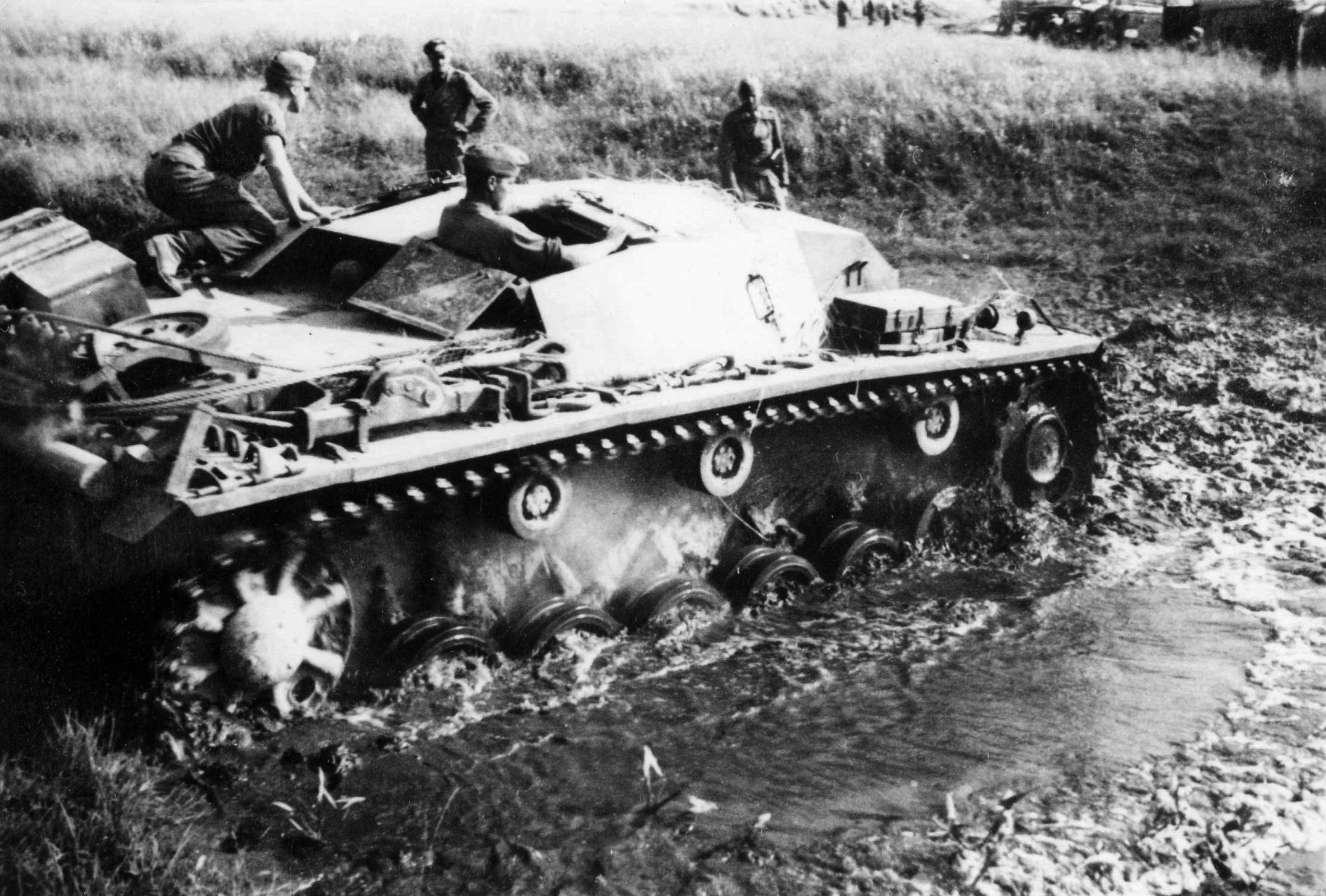
Hitler Versus German High Command
With the infantry still lagging behind, the mechanized units of Panzergruppe 4 became enmeshed in another grueling battle with the Soviet forces occupying the eastern side of the river. While the Panzergruppe was stalled on the Luga, the Soviets were building yet another defensive line close to Leningrad. Antitank ditches were constructed by thousands of civilians under the watchful eyes of Red Army engineers. Minefields, bunkers, fortifications, and antitank strongpoints seemed to spring up overnight as more and more civilians were pressed into service.
A frustrated Halder penned an August 15 entry in his diary that once again concerned Heeresgruppe Nord. “Here we are paying for our lack of courage to take risks,” he wrote.
In mid-September von Manstein received orders that would take his corps (minus the 8th Panzer Division) away from Leningrad forever. Hitler and the Army command in Berlin were at odds as to which objectives would mean collapse for the Soviet Union. The Army pressed time and again for capturing Moscow, while Hitler wanted Leningrad as well as the capital. Indecision and shuffling forces back and forth had already cost the Germans almost a month of good weather as the objectives shifted. Now one of the finest corps in the German Army was being sent to Heeresgruppe Mitte (Army Group Center) to clear out the area around Demyansk in preparation for a massive drive on Moscow.
“In the end, what we felt in those weeks was the divergence between the goals of Hitler and those of the OKH (German High Command),” von Manstein later wrote. “Even as a commanding general, I was unable to make any sense of all this chopping and changing, though I did form the impression that it was all ultimately due to the tug-of-war evidently going on between Hitler and the OKH over whether the strategic aim should be Moscow or Leningrad.”
Part of that chopping and changing included the transfer of General Rudolf Schmidt’s XXXIX Army Corps (motorized) from Heeresgruppe Mitte to Heeresgruppe Nord in mid-August. Born in Berlin in 1896, Schmidt had fought in World War I and had stayed in the Army at the end of the war. In October 1937, he became commander of the 1st Panzer Division, a position he held until February 1940, when he was chosen to lead the XXXIX.
Schmidt’s motorized corps included the 12th Panzer Division and the 20th Motorized Division. Since the beginning of Barbarossa it had been attached to Panzergruppe 3, and it had taken part in the huge battles of encirclement at Minsk and Smolensk. The 12th Panzer Division was commanded by ex-cavalryman General Josef Harpe, while the 20th Motorized Division was commanded by General Hans Zorn.
The Push on Leningrad
As Schmidt’s units were being transported to Heeresgruppe Nord, a concentrated effort was finally under way to take Leningrad. Enough infantry divisions were now in position to support Panzergruppe 4’s flanks, but the objective had once again been changed. The differences between Hitler and the OKH were somewhat resolved in the new plan. Instead of assaulting Leningrad directly, the city was to be cut off, with the help of the Finns on the Karelian Isthmus, and the population would be left to starve to death or surrender.
Before von Manstein left for the south, his LVI Motorized Corps went into battle near Staraya Russa. The Soviet 34th Army bore the brunt of the attack and lost 12,000 men captured, along with 140 tanks and 240 artillery pieces captured or destroyed.
On August 24, General Georg-Hans Reinhardt’s XLI (motorized) Corps made it to Krasnogvardiesk, about 32 kilometers from Leningrad, before being stopped in fierce fighting with the Red Army’s 41st Rifle Corps. The same day, Schmidt’s XXXIX (motorized) Corps, now also controlling the 18th Motorized Division, prepared to move out and envelop Leningrad from the southeast.
The men of Heeresgruppe Nord had advanced hundreds of kilometers since the beginning of Barbarossa, destroying several Soviet armies along the way. It was not all one sided however. The army group had sustained 80,000 casualties since the invasion began and its armored formations had an average of 50-75 percent of their authorized strength. Although the Russo-German casualty rate was definitely in favor of the Germans, it seemed to many men at the front that the end was still nowhere in sight.
Schmidt had completed his unit dispositions and had moved into position alongside the I and XXVIII Army Corps for the run to link up with the Finns. On August 25, Schmidt and the XXVIII Army Corps (General Mauritz Wiktorin with the 96th, 121st, and 122nd Infantry Divisions) smashed into Lt. Gen. Stephan Dmitrievich Akimov’s 48th Army, forcing the Soviets to retreat.
The town of Liuban was taken and a rail line running from Leningrad to the southeast was cut. Schmidt then ordered Heerlein’s 18th Motorized Division to advance on Kirishi and Zorn’s 20th Motorized Division to strike toward Volkhov. Harpe’s 12th Panzer was sent toward Kolpino, while Brandenberger’s 8th Panzer, now in Schmidt’s corps, was kept in reserve.
The commander of the Leningrad District, General Markian Mikhailovich Popov, sent reinforcements to try to plug the gap. Schmidt’s units, now reinforced by Wiktorin’s infantry, continued their advance despite Popov’s efforts. Their next objective was the city of Mga, which straddled the last remaining rail line directly connecting Leningrad with the outside world.
Akimov’s 48th Army, reeling under incessant German attacks, was in little condition to stop the German armored and motorized divisions. His shattered units dug in around Mga to meet the German assault, but after extremely heavy fighting Schmidt’s troops captured the city.
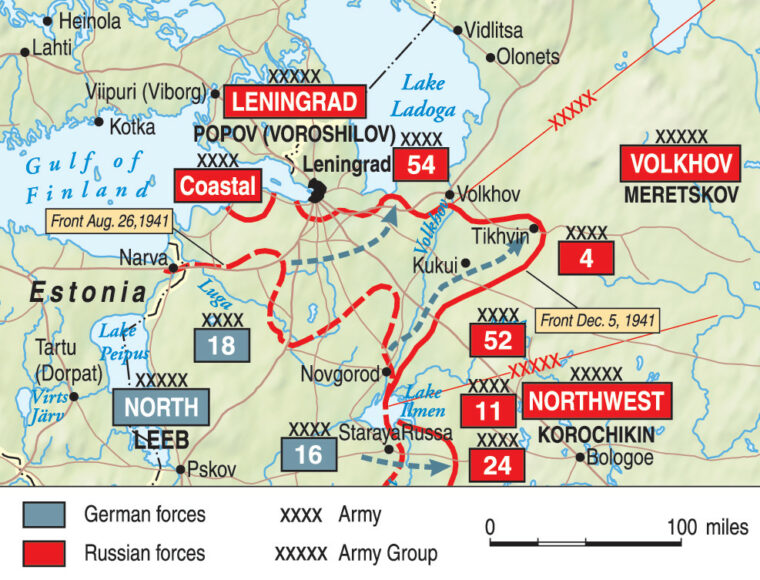
In the last days of August, Akimov launched a fierce counterattack against Mga with two rifle divisions, a mountain rifle brigade, and an NKVD division. The attack carried the Russians through the city, dislodging the German defenders and retaking the pivotal rail hub. The victory, however, was short lived.
Zorn’s 20th Motorized Division struck back on August 31 with a vengeance, hitting Mga with heavy artillery fire and calling in Luftwaffe support. The dismounted infantry of the 20th recaptured the Mga station and slowly drove the Soviets back out of the city.
“We are Going to Take That Thing”
Elsewhere, on August 30 the 5th Company/Infantry Regiment 30 of the 18th Motorized Division fought its way through the ruins of Kirishi. Its commander, 1st Lieutenant Franz Buchner, gathered his men together as they stared at the great iron bridge spanning the Volkhov River. At any moment they expected the huge structure to vanish as they waited for the Soviets to set off explosive charges that surely must have been placed around the massive piers that supported the bridge.
“We are going to take that thing,” Buchner told his men. They glanced at each other, hoping their ears were playing tricks on them, but looking back at their commander they saw that he was deadly serious.
Supported by the 2nd Battery/Artillery Regiment 18, Buchner and his men attacked. Surprised Soviet guards on the western side of the bridge were cut down by gunfire while artillery pounded the Russian forces on the opposite side. Several of Buchner’s men fell as the Soviets recovered from their initial shock, but the rest continued to storm across the bridge, spraying the remaining Russians with bullets and lobbing grenades to add to the carnage caused by the artillery fire. They were across and in the midst of the remaining Russian guards before the explosives could be set off, securing the bridge for the rest of the 18th to cross.
On October 2, Buchner received the Knight’s Cross for his actions at Kirishi. Less than two months later Buchner was killed leading his men in desperate winter fighting. He was 23 years old.
The Move to Cut off Leningrad
During the next week, Heeresgruppe Nord slowly tightened its grip around Leningrad. The Soviet 8th Army was bottled up in the Oranienbaum pocket with its back to the Baltic, but von Küchler’s 18th Army was stretched too thin to eliminate it. The pocket, located west of Leningrad, would be a thorn in the Germans’ side for years to come.
With Mga now in German hands, von Leeb prepared for an attack on the linchpin of the Leningrad Front, the town of Schlisselburg, located east of Leningrad on the shore of Lake Ladoga. If the Germans could take the town, all land communication and supply lines between Leningrad and the rest of the Soviet Union would be cut.
Wiktorin’s XXVIII Army Corps was subordinated to the XXXIX (motorized) Corps to form Gruppe Schmidt. The reinforced command kept up the pressure against the 48th Army, which was trying to defend new fallback positions. Schmidt’s divisions once again tore holes in Akimov’s defenses, pushing the Russians steadily back to the Neva River.
While the 48th Army suffered at the hands of the Germans, a change of command took place in Leningrad. Popov was dismissed as commander of the Leningrad Front in early September and replaced by Stalin’s close friend, Marshal Kliment Efremovich Voroshilov.
Victor of the 1939-1940 Winter War with Finland, Voroshilov had been an early member of the Communist Party and was a Red Army commander during the Russian Civil War. He survived the 1937-1938 Army purges, and following his victory in Finland he was appointed deputy premier in May 1940. Voroshilov was also a member of STAVKA (Soviet High Command), giving him a special association with Moscow headquarters. The change in command did little to help the immediate situation at Leningrad.
Schmidt’s enlarged corps came to the forefront again in the drive to Schlisselburg. On September 6, Luftflotte 1 sent about 300 bombers to pound the 1st NKVD Division, which occupied defenses in front of the town. Schmidt then ordered his units to advance on a narrow front.
The men of the 1st NKVD Division, supported by the 1st Separate Mountain Rifle Brigade, fought furiously to prevent the German assault. Schmidt reinforced his lead division, the 20th Motorized, with elements of the 12th Panzer, which helped the 20th smash through the Soviet line.
Overwhelmed, the Russians were forced to retreat once again. Schmidt’s forces advanced, meeting scattered resistance as they moved forward to capture the town of Siniavino on September 7, opening the way for a final push on Schlisselburg.
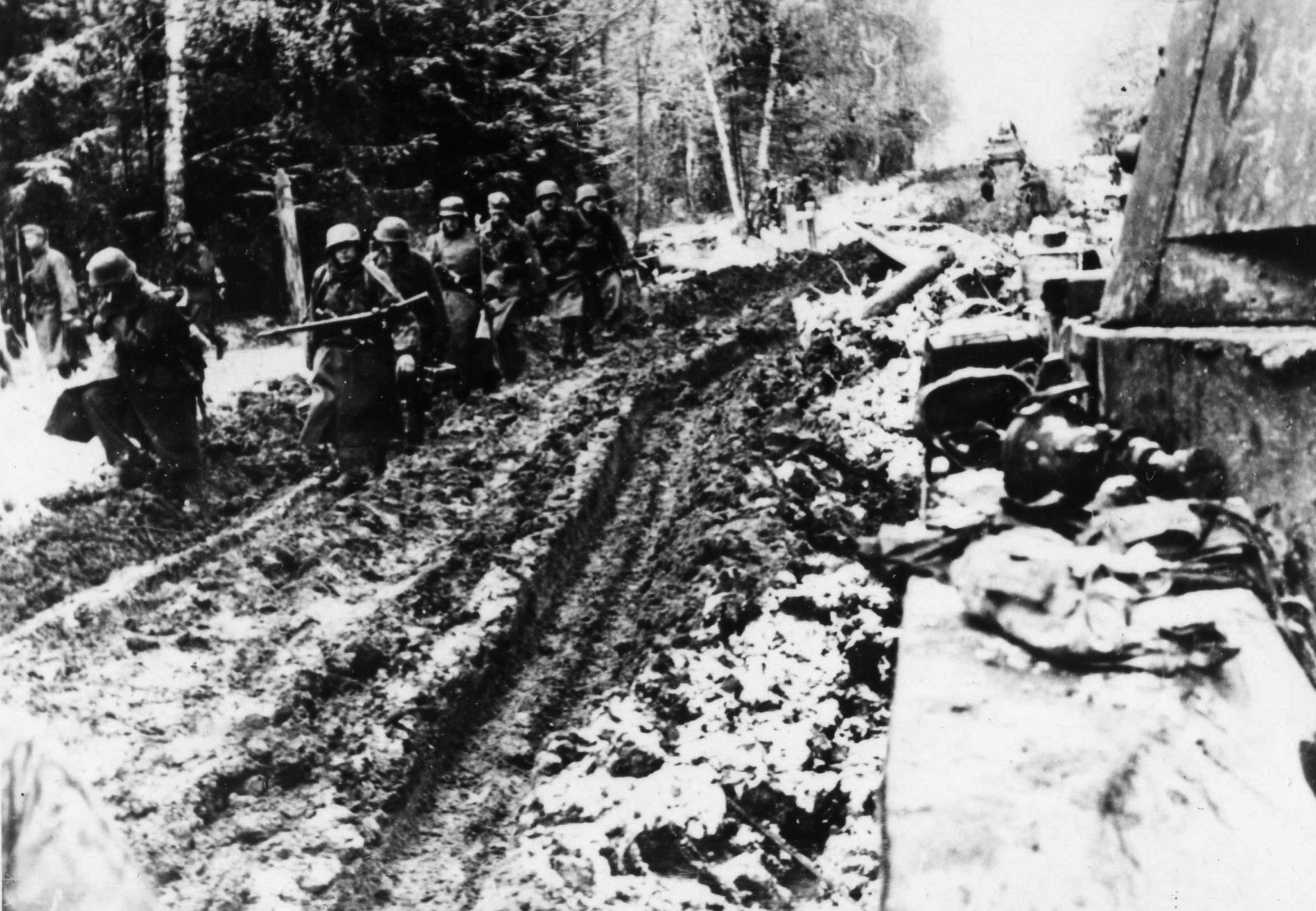
“Our Objective has been Completed”
The 48th Army, now commanded by Maj. Gen. Makrim Antonovich Antoniuk, was in shambles. Its units were spread throughout the countryside and many of its soldiers lay dead on the battlefield. With no coherent forces opposing them, the 20th Motorized and 12th Panzer were able to take Schlisselburg on September 8. The following day, General Georgi Konstantinovich Zhukov arrived in Leningrad to replace Voroshilov, who had needed only a few days to show incredible incompetence as commander of the Leningrad Front.
Leningrad was now isolated by the Germans in the south and the Finns in the north. Approximately 2.5 million civilians were trapped inside the city along with the defending Red Army. Hitler’s orders were to starve the city into submission, but he also had plans to raze it. On the evening of September 8 the city was subjected to two massive air raids. These were to be followed by many more in the coming months.
The Germans seemed quite content with their success. Three days before the fall of Schlisselburg, Halder noted in his diary, “Our object has been achieved. (Leningrad) will now become a subsidiary operation…. As much infantry as possible must be put across the Neva (River). Investment from the east, junction with the Finns. Armor (Reinhardt’s Corps) and Luftwaffe units must be released (for the coming assault on Moscow).”
Hitler was also confident that the main operations against the city were all but over. On September 6 he had issued Führer Directive 35, ordering Heeresgruppe Nord to “also isolate the region of combat operations at Leningrad from the sector along the lower reaches of the Volkhov as soon as forces necessary to perform this mission become available. Link up with the Karelian Army (Finns) on the Svir River only after enemy forces have been destroyed in the Leningrad region.”
The Red Army Digs its Heels
If the Germans thought the battle for Leningrad was practically over, the Soviets had an opposite opinion. As von Leeb’s forces continued to tighten the ring around the city, Red Army units dug in their heels. Schmidt’s corps had tough going against the 54th Army, commanded by Marshal Grigorii Ivanovich Kulik, which was guarding the approaches to the Volkhov. In other sectors of the front, the cities of Pushkin and Slutsk fell to the Germans only after bitter fighting.
Hitler’s orders to clear the lower reaches of the Volkhov led to heavy fighting as the Germans approached the river. On September 12 the decimated 48th Army was disbanded and its remaining troops were transferred to Kulik, who was assembling his army on the Volkhov Line. Zhukov also reinforced the Volkhov defenses with General Vzevolod Fedorovich Iakovlev’s 4th Independent Army and General Nicolai Kuzmich Klykov’s 52nd Army.
While the Soviets regrouped in front of the Volkhov, Schmidt’s XXXIX (Motorized) Corps, occupying the eastern positions at Leningrad, was performing double duty. Some elements of the 20th Motorized Division occupied a sector facing Leningrad running south from Schlisselburg while other elements of the division faced the Soviets in front of the Volkhov. The 8th and 12th Panzer Divisions were 15 kilometers to the east, strung along a line east of Mga.
Zhukov saw an opportunity to strike back at the Germans at the Volkhov and possibly retake Schlisselburg. He therefore ordered Kulik to hit eastern elements of the 20th Motorized and drive them back, hoping to recapture much of the southern shore of Lake Ladoga.
Kulik’s men, supported by limited artillery fire, caught the Germans off guard. The 54th Army moved toward the town of Sinyavino, which lay a few kilometers behind the 20th’s left flank. Although the attack had begun well enough, the Russians soon found themselves being hit by German artillery as they advanced.
In a series of bloody clashes in the Sinyavino area, the 20th stopped the Soviets cold and Kulik had no choice but to call off the attack on September 20. His men had regained only about seven kilometers of land, which was quickly retaken by the Germans. Kulik was demoted and replaced for his failure. His successor was one of Zhukov’s trusted lieutenants, General Mikhail Semenovich Khozin.
Two Exhausted Armies
As a lull settled over the lines at Leningrad, most eyes switched to the central sector of the Eastern Front. Operation Taifun (Typhoon), the German drive on Moscow, had begun. Resources had been drained off Heeresgruppe Nord for the offensive, and the remaining units of von Leeb’s command were nearly exhausted. Equipment was badly in need of repair, and replacement parts were slow in coming because of the rugged terrain and lack of roads.
The Soviets were in similar shape. From July 10 to September 30, the Northwestern Front had sustained 144,788 casualties out of a total strength of 272,000. Of the 300,000 soldiers engaged in the Leningrad Front, 116,316 were killed, wounded, or captured from August 23 to September 30.
While land routes directly into Leningrad had been cut, the city was still receiving some much- needed supplies by way of a rail line that ran through the towns of Tikhvin and Volkhov, ending on the shore of Lake Ladoga at Lednevo. Supplies were then trucked to the port of Novaya Ladoga and shipped across the lake to Osimovets, which was connected by rail line to Leningrad.
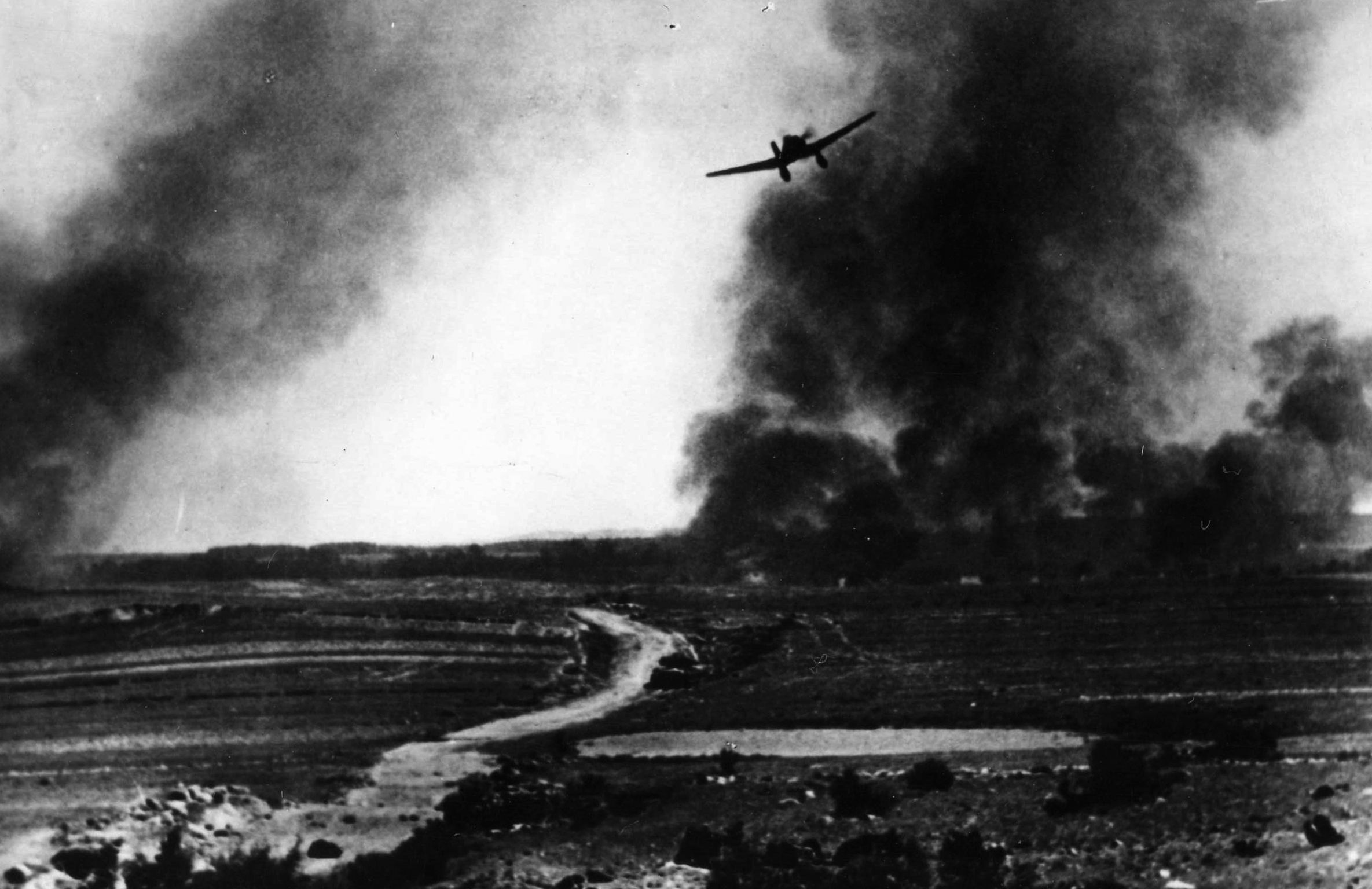
Although Moscow was chief among the priorities set by the German High Command, Leningrad had not been forgotten by Hitler. He was still obsessed with destroying the city bearing Lenin’s name. This obsession would take a new turn the following year when he chose to destroy another city bearing a Soviet leader’s name—Stalingrad.
His orders in Directive 35 gave von Leeb some direction, and the field marshal and his staff were already working on plans that he hoped would cover the rather vague instructions coming from Berlin. Using Schmidt’s corps with infantry reinforcement, von Leeb planned to attack the 54th Army, destroy it, and take Volkhov, cutting the vital rail line.
Orders from Berlin
Von Leeb submitted the plan to Berlin, hoping to start the attack on October 6. The plan was rejected because of the terrain facing the German armored forces. Halder’s October 5 entry in his diary includes the following: “In Heeresgruppe Nord the attack against the Ladoga front planned for October 6 has been called off by OKH (Army High Command), and an order has been issued to take out the armored divisions, which would needlessly burn themselves out in that terrain. The attack will be launched with infantry as soon as sufficient strength has been built up with newly arrived divisions. Meanwhile, the armored divisions will rest and refit.”
While the infantry came forward and Schmidt’s armor took time for repairs, von Leeb received another order from Berlin. Instead of following his planned line of advance, Hitler had decided that the attack would proceed northeastward from Chudovo to Tikhvin. Once the rail line was cut at Tikhvin, the attack would turn to the northwest, advancing to the Volkhov along the Tikhvin-Volkhov road and rail line.
It was a tall order to follow. Hitler’s plan sent the German salient much farther than the plan that von Leeb had proposed. With that much more land to take and hold, more units would have to participate in the attack. Now that Operation Typhoon was in full swing and with the withdrawal of several divisions from Heeresgruppe Nord to bolster that attack, von Leeb had little left to spare.
Von Leeb had doubts about the Ladoga operation, but he knew better than to argue with Berlin. Hitler had already shown his absolute faith in himself as a military commander, and there was little doubt that any objections to the plan would be brushed aside.
First Signs of the Russian Winter
While the field marshal worked on the new attack plan, another important event occurred in Heeresgruppe Nord’s sector. October 14 saw the first snowfall of the season. Temperatures started to drop, and the mud left by autumn rains started to freeze.
The icy wind from the east cut through the German troops, who were still clad in their summer uniforms. Their hobnailed boots, impressive sounding as they goose-stepped on the cobblestoned streets in parades at home, conducted the cold through the soles, causing the first cases of frostbite.
With the weather growing worse, von Leeb planned to attack on October 16. Schmidt’s four divisions (8th and 12th Panzer and 18th and 20th Motorized) would drive on Tikhvin, supported by the I Army Corps (11th, 21st, 126th, and 254th Infantry Divisions under the command of General Hans-Kuno von Both). If all went well, the two corps would then swing toward Volkhov.
Meanwhile, Stalin had made some changes of his own in regard to Leningrad’s defense. With the Germans advancing on Moscow, Zhukov was recalled to take command of the capital’s defenses. He was replaced by another one of Zhukov’s protégés, General Ivan Ivanovich Fediunenskii.
Heavy snow was falling when the Tikhvin offensive got under way in the early hours of October 16th. As the troops began to move out, a brief artillery barrage hit the Soviet line, churning the half-frozen ground into a sticky mass that was sometimes mixed with bits of flesh and bone.
“Kompanie Vorwarts“
“Kompanie vorwarts,” came the command to the initial assault troops. German troops immediately began moving toward the Soviet defenses. The brunt of the attack came along the Volkhov between Gruzino and Kirishi. It was up to von Both’s infantry to secure bridgeheads on the eastern bank of the river, paving the way for Schmidt’s panzers and motorized troops.
At Gruzino, assault battalions of General Otto Sponheimer’s 21st Infantry Division overcame fierce Soviet resistance from the 267th and 288th Rifle Divisions and succeeded in crossing the 300-meter-wide river. By the end of the 16th, Sponheimer had all three of his regiments across the Volkhov, and a heavily defended bridgehead had been established. Probing attacks went on throughout the night and the next day, widening the bridgehead in preparation for the arrival of Schmidt’s corps on the eastern bank.
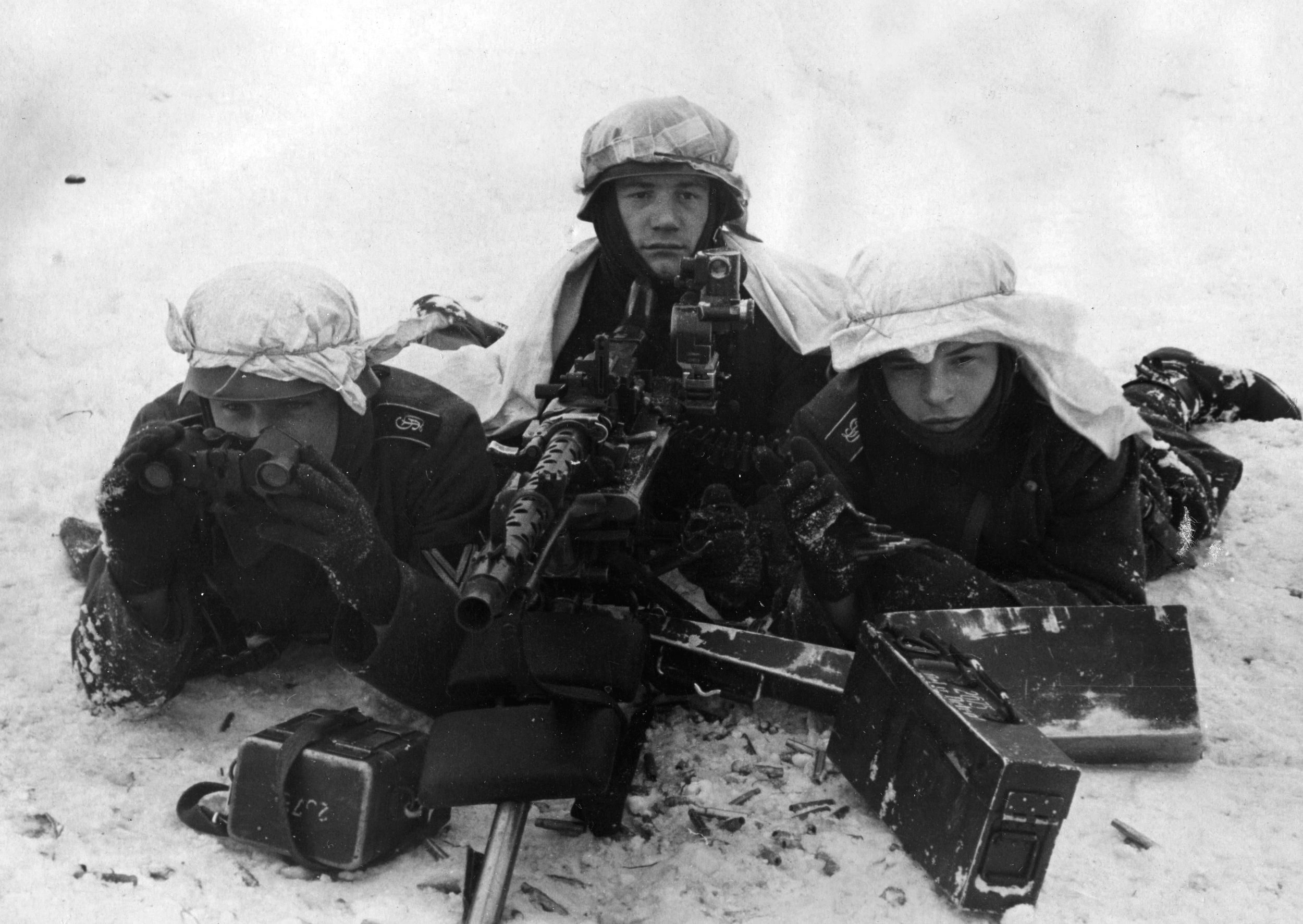
Near Kirsihi, General Hermbert von Böckmann’s 11th Infantry Division had similar success. Once Schmidt’s corps was across the Volkhov River, the two infantry divisions were slated to begin a combined assault toward the city of Volkhov. The attack was designed to protect Schmidt’s left flank while putting pressure on Khozin’s 54th Army to prevent him from reinforcing the troops facing Schmidt.
One by one, Schmidt’s four divisions crossed the Volkhov at Gruzino and headed to assembly areas behind the main line of the ever expanding bridgehead. By October 18, the corps was across and Schmidt was ready to strike. His first objective on the more than 100- kilometer drive to Tikhvin was the town of Budogosh’, some 35 kilometers away.
The Red Army units of Iakovlev’s 4th Independent Army would bear the brunt of the attack toward Tikhvin, but Klukov’s 52nd Army and Khozin’s 54th Army would also enter the fighting as Schmidt expanded his flanks. Because of the extended front, the Soviet forces directly opposing Schmidt’s assault consisted of five rifle divisions, a cavalry division, five artillery regiments, one tank battalion, and one antitank regiment.
Although the Soviets were stretched thin, the Germans would not have an easy time of it. As noted in Halder’s diary, von Leeb’s earlier plan to send the armored and motorized infantry divisions of Schmidt’s corps directly toward Volkhov was rejected because of terrain concerns. Schmidt faced the same difficult conditions, albeit to a slightly lesser degree, in his drive on Tikhvin.
In this area of Mother Russia the terrain was covered with swamps, marshes, and forests. Although the Germans could use railway beds to good advantage, the dirt roads in the region were already nothing but muddy trails because of the rain and snow that had fallen. They became nearly impassable after the first wave of armored vehicles came through, leaving the following forces trying to move forward in mud that could suck the boots right off the feet of the infantry.
Small villages dotted the area, giving the Russians defensive positions on relatively dry land. There were also steeply banked rivers and streams that had to be crossed, adding to logistical problems for any attacker.
As the Germans moved forward on the snow-covered ground, they came up against hastily prepared defensive positions of the 4th Army. The newly fallen snow helped conceal Soviet strongpoints, and rifle and machine-gun fire ripped through the first ranks of German infantry. Calling for panzer and artillery support, the lead German companies forced their way through the Soviets and continued to advance.
The Soviets Counterattack
It took four days to punch through the Soviet line. When the breach finally occurred, Schmidt had forced Iakovlev’s 267th and 288th Rifle Divisions to retreat in a northeasterly direction. Never one to miss an opportunity, Schmidt ordered more forces into the breach to follow the retreating Soviets. The advance exposed the left flank of the 292nd Rifle Division, which was essentially hacked apart by the German panzers and infantry.
Schmidt’s maneuver cut the junction of the 4th and 52nd Armies. Iakovlev had little with which to fill the gaps and regain contact with Klykov, although he was ordered by Moscow to do so. The few attacks he was able to mount were easily repulsed as the Germans continued to advance.
The XXXIX Corps used the combined forces of the 12th Panzer and 20th Motorized Divisions as its spearhead to capture the next objective—the town of Budogosh’. Protecting the spearhead’s left flank was the 21st Infantry Division, which was engaging units of Khozin’s 54th Army. The right flank was initially covered by the 8th Panzer and 18 Motorized Divisions and the 126th Infantry Division.
While the spearhead advanced on Budogosh’, the flanking units fanned out. Khozin’s divisions were driven northward by the 21st, which was now supported by the 11th Infantry Division. Against the remnants of the 294th Rifle Division, the 21st was able to take Pokrovskaia on October 22, opening the way for an attack on Kirishi from the south and east.
On Schmidt’s right flank, General Paul Laux urged his 126th Infantry Division forward, driving back elements of Klykov’s 288th Rifle Division to take the town of Bol Vishera. The 18th Motorized also made steady progress against the 267th and 259th Rifle Divisions, driving them southeastward while further widening the pocket.
Budogosh’ fell on October 23. Iakovlev immediately ordered units that were close to Tikhvin to move forward and build a new set of defenses now that it seemed obvious where the Germans were headed. He also exhorted the divisions on his right flank to stop the German infantry advancing north of Kirishi.
Mindful of the dangers presented by the German advance, Moscow reinforced the 4th Army with any units that could be spared. Two divisions (310th and 4th Guards Rifle) came to Iakovlev from the 54th Army. Other units transferred to the area included the 92nd, 191st, and 41st Rifle Divisions as well as the 60th Tank Division.
Urged on by STAVKA, the Soviet Army commanders were ordered to counterattack the German salient from all sides. Although these attacks slowed Schmidt’s advance, they cost the Russians dearly. A particularly nasty encounter occurred about 40 kilometers northeast of Budogosh’ when three Red Army divisions hit the advance elements of Harpe’s 12th Panzer Division near the village of Sitomlia on October 27.
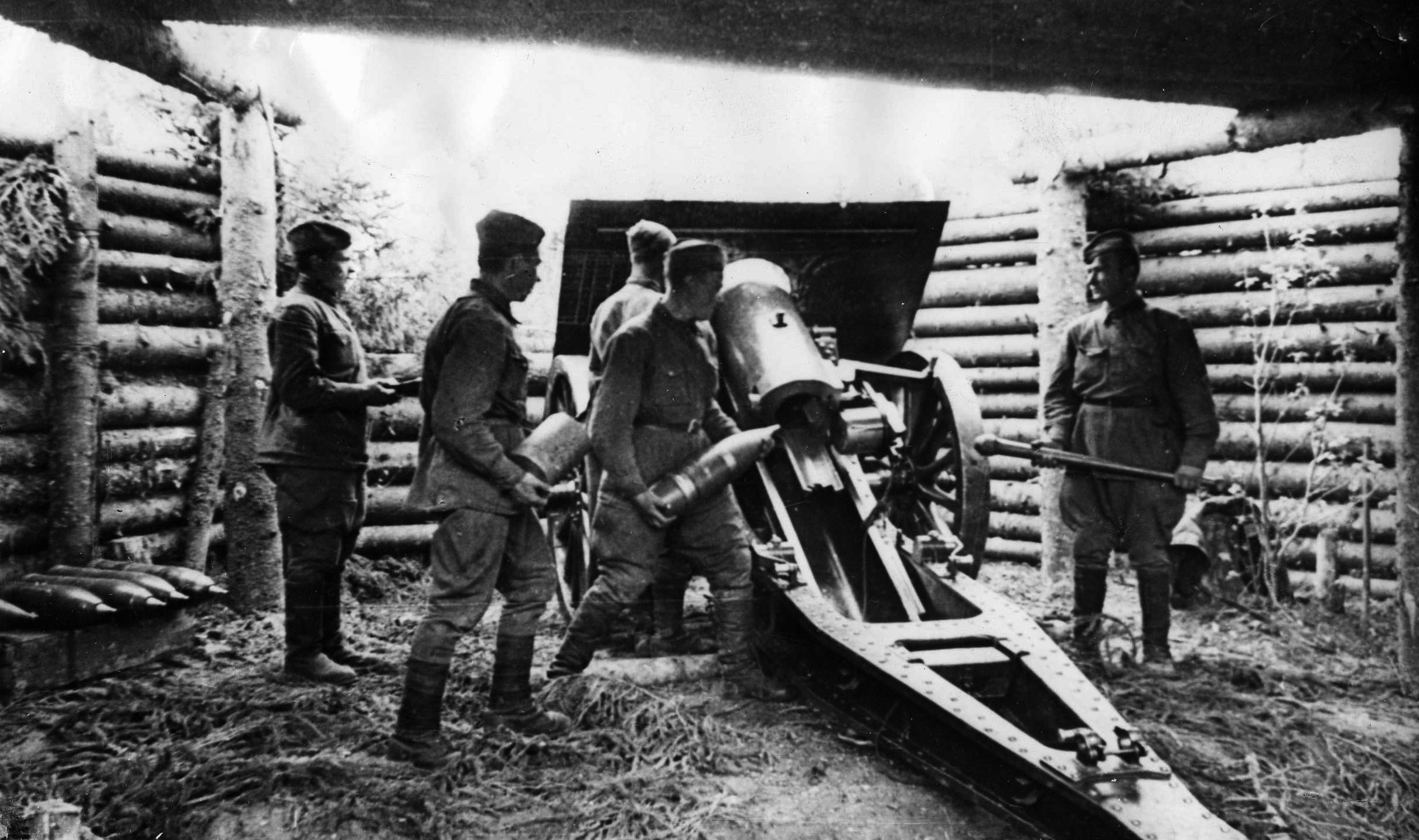
Harpe’s reconnaissance battalion made first contact with the Soviets. The battalion commander immediately ordered his unit into a defensive posture and called for reinforcements as the Russians attacked. It should have been over quickly, but the effects of the Red Army purges of the 1930s were still very apparent. Instead of a coordinated attack against the division, the Soviet commanders committed their units piecemeal, allowing Harpe to meet one attack and then shift forces to meet a new threat.
The poorly planned attack did have one benefit, however. It forced Schmidt to halt for the time being, having identified new enemy divisions between the 12th Panzer and its goal of Tikhvin. Not knowing how many more reinforcements Iakovlev had received, Schmidt united his corps by calling the 8th Panzer and 18th Motorized Divisions to reinforce his spearhead, forcing the 126th Infantry to lengthen its line to protect Schmidt’s right flank.
By the evening of the 27th, the front had somewhat stabilized while both sides regrouped. With the Typhoon offensive still in full swing, it seemed as if the OKH had once again relegated the Leningrad Front to the backwaters. Nevertheless, the drive toward Tikhvin was to continue as soon as Schmidt consolidated his armored and motorized forces.
An Unhindered Advance
While Schmidt waited for the 8th Panzer and 18th Motorized to make their way to Sitomlia, another harsh blast of cold, rain, and snow struck the area. The 8th Panzer Division reported, “Due to the actions of previous weeks, especially of the last few days, the combat troops’ health has turned considerably unfavorable. The troops show they are not ready for the conditions of future fast marches due to the weight of the equipment they must carry. Foot disease and respiratory problems are numerous.” Nevertheless, the infantry elements of the division, most of their motorized transport hopelessly mired in the mud and snow, continued to move.
The Soviets were not sitting idle while Schmidt regrouped. On November 2, the 12th Panzer Division was hit on its northern flank by what amounted to two Red Army divisions. The Russians desperately tried to break the German line but suffered heavy losses as the 12th’s artillery pummeled the attackers.
While the fighting was going on in the north, a second Soviet force hit Harpe’s southern flank on November 4. Supported by tanks from the 60th Tank Division, the 4th Guards Rifle Division made some inroads before being driven back by massed German artillery fire.
After a seemingly endless march, the 8th Panzer and 18th Motorized Divisions finally reached their assembly points for the continuation of the Tikhvin attack, and on November 5 the drive once again began in earnest. Buoyed by the arrival of the two divisions, Harpe was able to use his 12th Panzer to knock gaping holes in the 191st Rifle Division’s defenses, opening the way to Tikhvin.
A Siberian blast of winter helped the German advance by freezing the ground and the streams in the area, making it easier for wheeled and tracked vehicles to move. In a desperate attempt to halt the Germans, the Soviets airlifted reinforcements to Iakovlev in a blinding snowstorm. Their arrival did little good as the 12th pressed forward.
Capturing Tikhvin
Fighting was still heavy on the northern and southern flanks of the salient. On November 6, a unit of the 8th Panzer Division, which was on Harpe’s right flank, was attacked by 14 Soviet tanks from the 60th Tank Division. Charging out of a patch of woods, the Russian armor commenced firing on the German column.
The 8th Panzer’s after action report stated that the first Soviet tank had been immediately destroyed and that German armor had destroyed one tank after another until only two were left. The lucky survivors of the disastrous attack had retreated into the woods, leaving the battlefield to the Germans.
Even with the Soviets nipping at his flanks, Schmidt kept pushing Harpe to take Tikhvin. By November 7, the lead units of the 12th Panzer were a mere seven kilometers from the town. Iakovlev had his headquarters in Tikhvin, and he urgently called for more reinforcements, which were airlifted in. They were immediately thrown into the line, but they could do little against Harpe’s panzers.
As the 12th closed on Tikhvin it was supported by a reinforced regiment of the 18th Motorized Division and a combat group from the 8th Panzer Division. Iakovlev personally led the defense of the town, which was occupied by the remnants of four rifle divisions.
A fierce snowstorm bore down on the area as Harpe launched his assault on the town on November 8. As the panzers rolled forward, the few remaining Soviet antitank guns lay still, waiting for their targets to appear. When the Germans emerged from the blinding snow, the Russians opened up, often at point-blank range. Several of the panzers were destroyed before the accompanying infantry was able to silence the guns.
Approaching the outskirts of the town, Harpe’s men were met with a determined defense. The Soviets fought for each house, but the infantry, supported by fire from their panzers, was able to blast its way through.
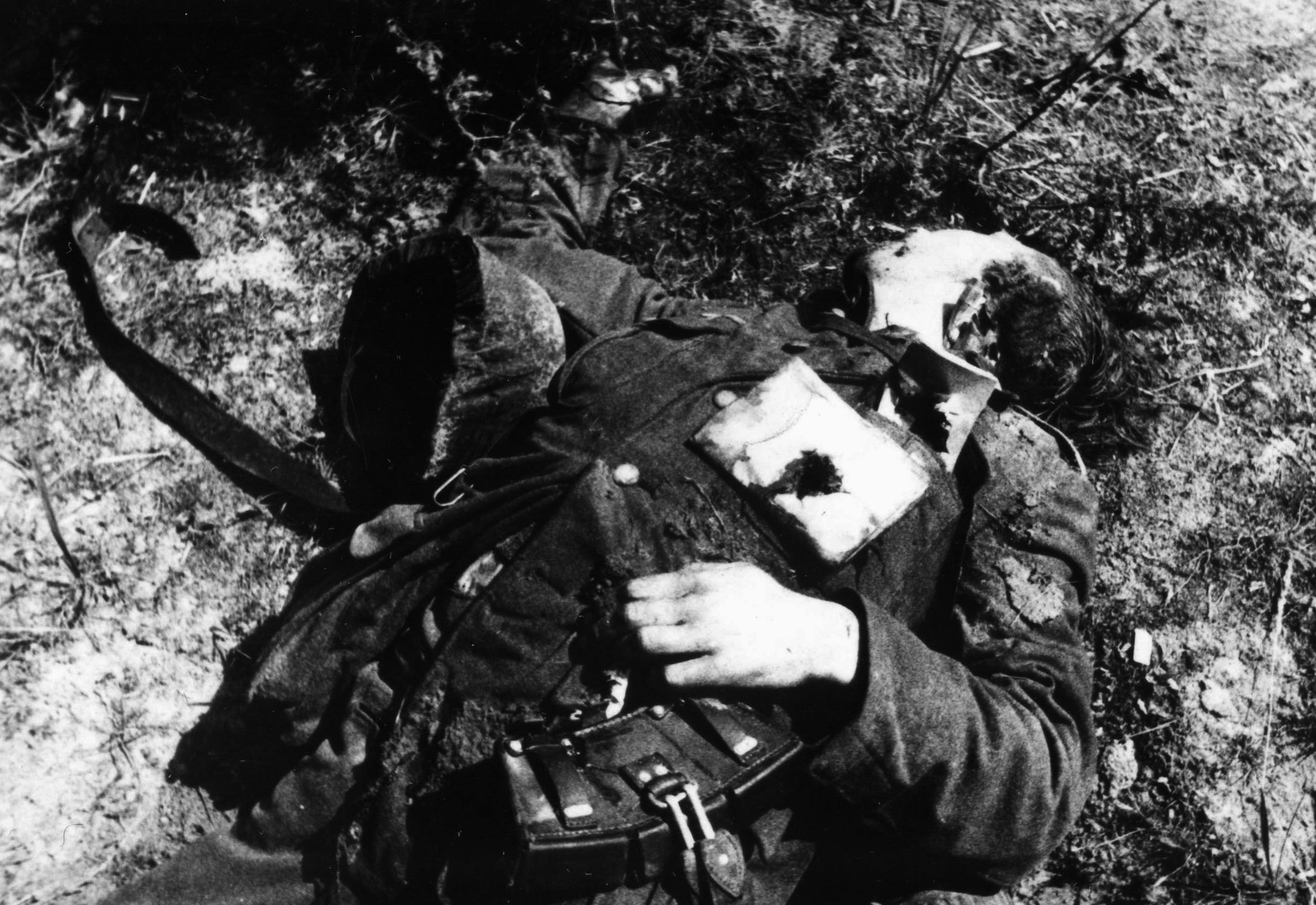
By midday on November 8, the battle was joined by the combat group from Brandenburger’s 8th Panzer Division. Together, Harpe’s and Brandenburger’s men steadily pushed the Russians back. Iakovlev and his staff barely escaped as the Germans captured block after block. By the end of the day, Tikhvin was in German hands. The following day, Iakovlev was replaced by General Kiril Afanasevich Meretskov.
Since the beginning of the Tikhvin offensive, Schmidt had taken 20,000 prisoners and had killed thousands more Red Army soldiers. In addition, 96 Soviet tanks, 179 guns, and an armored train had been either captured or destroyed. The butcher’s bill was not one-sided. German equipment suffered heavily from combat and the weather, as did the men. In the 12th Panzer Division, rifle companies were down to an average of 35 effectives.
When Hitler received word of Tikhvin’s capture, his mind focused farther to the east. Schmidt was shocked when he received a message from the Führer’s headquarters asking if it was possible to mount another assault—this time on Volgada, some 400 kilometers east of Tikhvin. With the condition of his corps, Schmidt could only shake his head in astonishment as he reread the message.
The German offensive had shot its bolt with the capture of Tikhvin. Temperatures had already fallen to 20 degrees below zero Fahrenheit, and in a few days they were down to 40 below. Equipment froze, and men literally died at their posts in their threadbare summer uniforms.
Schmidt’s Panzers Meets the T-34
While the Germans struggled just to stay alive, STAVKA was continuously funneling reinforcements into the Tikhvin area. The Soviets planned to hit the German flanks with the 52nd Army at Gruzino and the 54th Army at Kirishi. Meretskov’s 4th Army would assault Schmidt’s forces in the Tikhvin sector.
Meretskov had one tank, one cavalry, and five rifle divisions that were supplemented by a rifle and a tank brigade and three separate tank battalions. Facing Meretskov were the depleted 18th and 20th Motorized Divisions, the 12th Panzer Division, 61st Infantry Division, and elements of the 8th Panzer Division.
While the 52nd (four rifle divisions) and 54th (eight rifle divisions, two rifle brigades, two tank brigades, two ski battalions, and one tank division without tanks) Armies deployed on the flanks of the Tikhvin salient, Meretskov worked on his own dispositions. His Northern Group (1067th Rifle Regiment, two-thirds of the 44th Rifle Division, the 159th Pontoon-Bridge Battalion, and the 46th Tank Brigade) would hit the 12th Panzer and elements of the 8th Panzer northeast of Tikhvin while the 54th Army struck further to the west.
Meretskov’s Southern Group (92nd Rifle and 4th Guards Rifle Divisions and one-third of the 292nd Rifle Division) would strike elements of the 8th Panzer and 20th Motorized Divisions southwest of Tikhvin with the objective of cutting the German supply line to the town. The Eastern Group (191st Rifle Division, 22nd Cavalry Division, one-third of the 44th Rifle Division, one regiment of the 60th Tank Division, and the 128th Separate Tank Battalion) would hit Tikhvin itself.
On November 12, the 52nd Army struck the infantry divisions guarding the right flank of the salient. Laux’s 126th Infantry Division, stationed around Malai Vishera, bore the brunt of the attack and was soon fighting for its very existence. To Laux’s right, the 250th Infantry Division composed of Spanish volunteers fought ferociously as the Soviets tried to infiltrate between strongpoints that had recently been completed.
In the Tikhvin sector the new T-34 tanks rolled forward. Although they were few in number, the T-34s sent shock waves through the German panzer and antitank units. Surrounded by obsolete T-26s, which could be knocked out relatively easily, the T-34s shrugged off everything the Germans could throw at them.
Frantic calls to senior commanders pleaded for help as forward positions fell. Only the shoddy Soviet tactics prevented a breakthrough. As the accompanying T-26s were being destroyed by German fire, the T-34s fell prey to hastily formed infantry tank-killer groups that stalked the steel giants with bundles of grenades that could disable the tanks’ wide tracks.
Von Arnim Takes Command
While the fighting raged, the XXXIX Corps received a new commander. Schmidt, who was moving on as acting commander of the 2nd Army in Heeresgruppe Mitte, was replaced by General Hans-Jürgen von Arnim. A year and a half later, von Arnim would preside over the surrender to the Allies of German forces in North Africa.
During the next two weeks, the 54th Army attacked the left flank of the salient, creating an even bigger threat to the beleaguered forces at Tikhvin. In the subzero weather, Germans and Russians fought hand to hand, the frozen dead dotting the countryside like gruesome fallen statues.
While the assault continued, the Russians were beginning to construct a road north of Tikhvin that would connect Lake Ladoga with the rail line east of the town. The lake had finally frozen over, and, when finished, the new road would provide a vital supply line to besieged Leningrad.
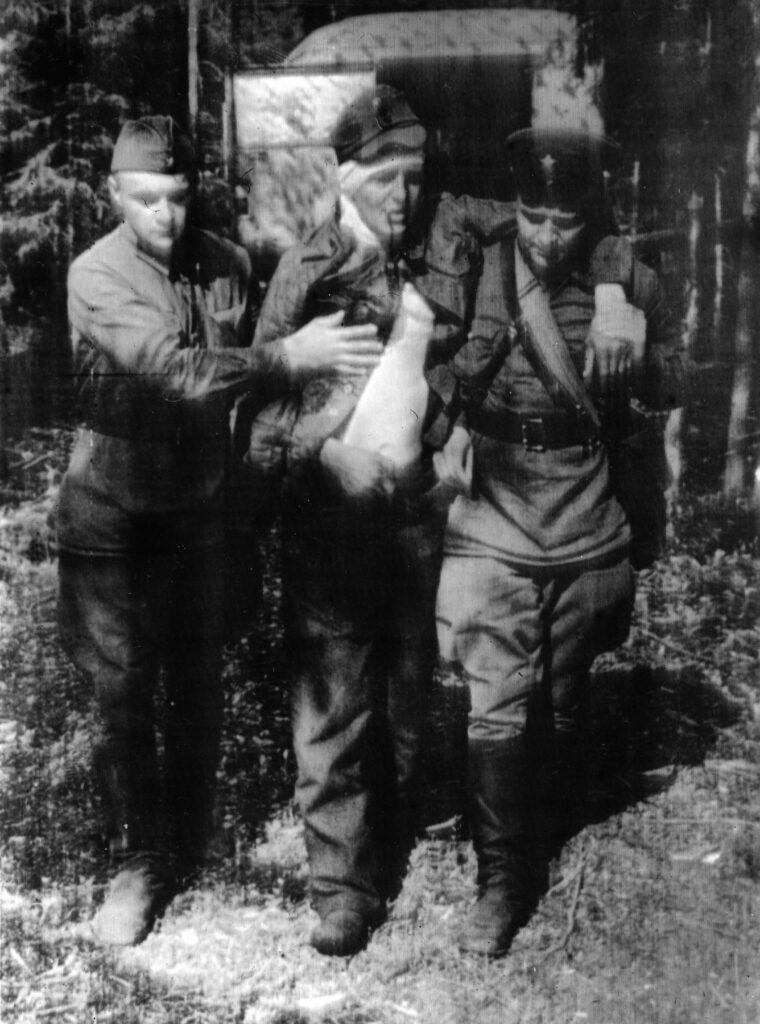
Severe weather and heavy fighting finally forced the 18th Army’s commander, von Küchler, to halt all of his offensive operations and go on the defensive on November 25. In other sectors of the Eastern Front the Germans were still rolling forward, but along the Volkhov Hitler’s eastern armies lost the initiative for the first time since Operation Barbarossa began.
At Tikhvin itself the fighting intensified as Meretskov urged his forces to put forth an even greater effort. In waist-deep snow the Red Army soldiers pushed forward against determined German resistance, slowly driving the freezing Wehrmacht troops back. Von Arnim’s losses continued to mount owing to the constant combat and harsh weather, while few replacements managed to arrive to reinforce his depleted divisions.
During the final days of November, Meretskov initiated a series of new attacks on Tikhvin. At the same time the 52nd and 54th Armies redoubled their efforts against the salient flanks.
By December 2, the 18th Motorized Division reported that it had fewer than 1,000 combat-effective troops. Other units defending Tikhvin were also suffering unbearable casualties, and the motorized and armored units of the corps were being burnt out in the static defense of the town. On December 3, General Siegfried Haenicke and his 61st Infantry Division took over the town’s defense.
The German Retreat
Meretskov kept up his attacks, and by December 6 the situation inside Tikhvin was steadily deteriorating. The subzero temperatures were causing numerous deaths among the German defenders, and new Red Army units were being identified as the Soviet attacks intensified. With new reinforcements, Meretskov was able to take Hill 50.2, cutting a vital road linking Tikhvin and supply bases farther west.
December 7 brought new attacks as the Soviets smelled success. Von Leeb had already reported to Berlin that he could not hold Tikhvin under the current conditions. Soviet attacks on the flanks were now so serious that the entire salient was in danger of being cut off, and the Heeresgruppe commander requested an immediate withdrawal.
Hitler gave quasi approval for a limited withdrawal but warned von Leeb that German forces must stay within artillery range of the town. By now other sectors of the Eastern Front were on fire as the Soviet winter offensive swung into high gear, and any dreams of pushing farther eastward were now gone. Another frantic call from von Leeb finally convinced Hitler of the futility of trying to hold the Tikhvin salient. Finally, in the early hours of December 8, Hitler gave approval to withdraw to the Volkhov.
In driving snow the depleted divisions of the XXXIX Motorized Corps began their retreat. The 18th Motorized Division, along with the 8th and 12th Panzer Divisions, was first off the lines. The 61st Infantry Division, along with elements of the 18th’s panzer regiment, provided the rear guard. It was exactly one month since the Germans had taken Tikhvin.
Men from Haenicke’s division gathered around the makeshift cemetery in Tikhvin to pay their respects to fallen comrades. Row upon row of rough wooden crosses stood starkly contrasted with the snow-covered ground. Behind the cemetery a multidomed monastery was outlined against the gray sky.
On the front line elements of two Soviet divisions were now fighting inside the town. As combat grew closer, the men at the cemetery started withdrawing westward, leaving their dead buried in the cold Soviet ground.
Securing the Supply-Line
By December 31, the Soviets were battering at the Volkhov Line. The great snow road to Lake Ladoga was safe, the Tikhvin rail line was once again in Russian hands, and Leningrad’s lifeline to the east was secure.
German forces in the north would never again be so close to totally cutting off the city, and no other attempt would be made for a broad assault to reach the Svir River. The combination of Hitler’s interference, the Russian weather, and the willingness of the Red Army to carry out attacks despite horrific losses deprived the Germans of what could have been an important step in the defeat of the Soviet Union.
Pat McTaggart is an expert on World War II on the Eastern Front and has contributed numerous articles on the subject to WW II History Magazine. He resides in Elkader, Iowa.
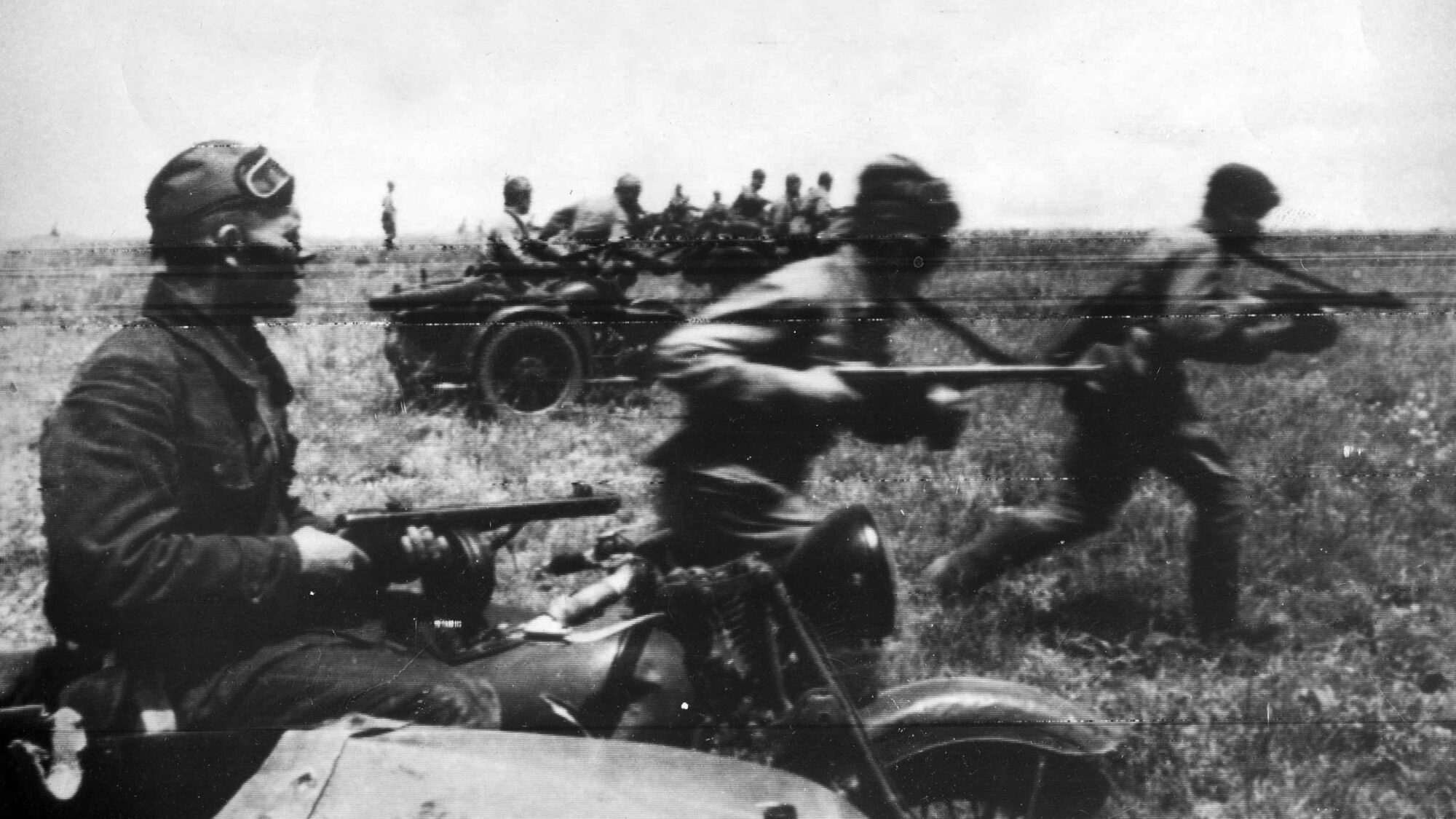
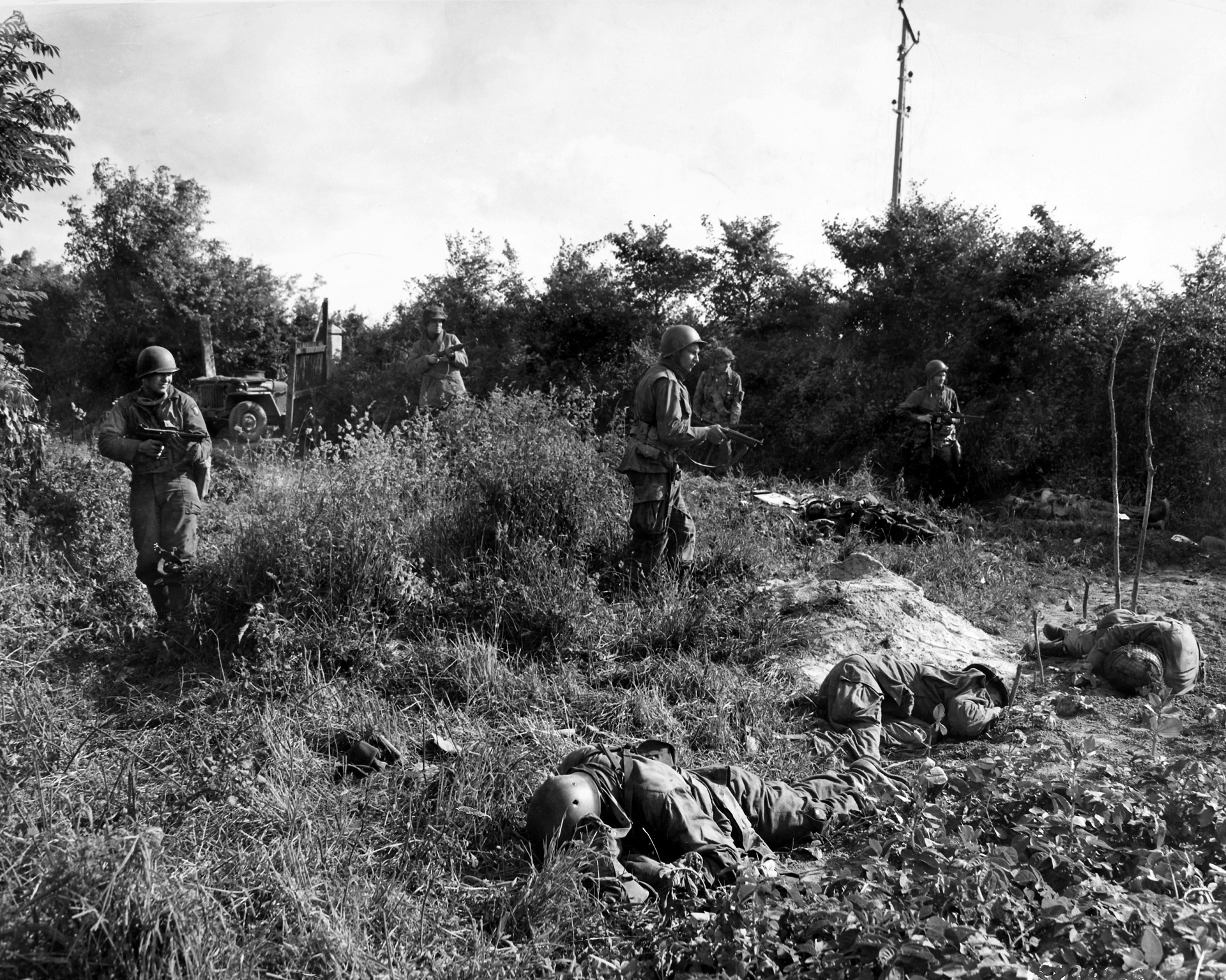
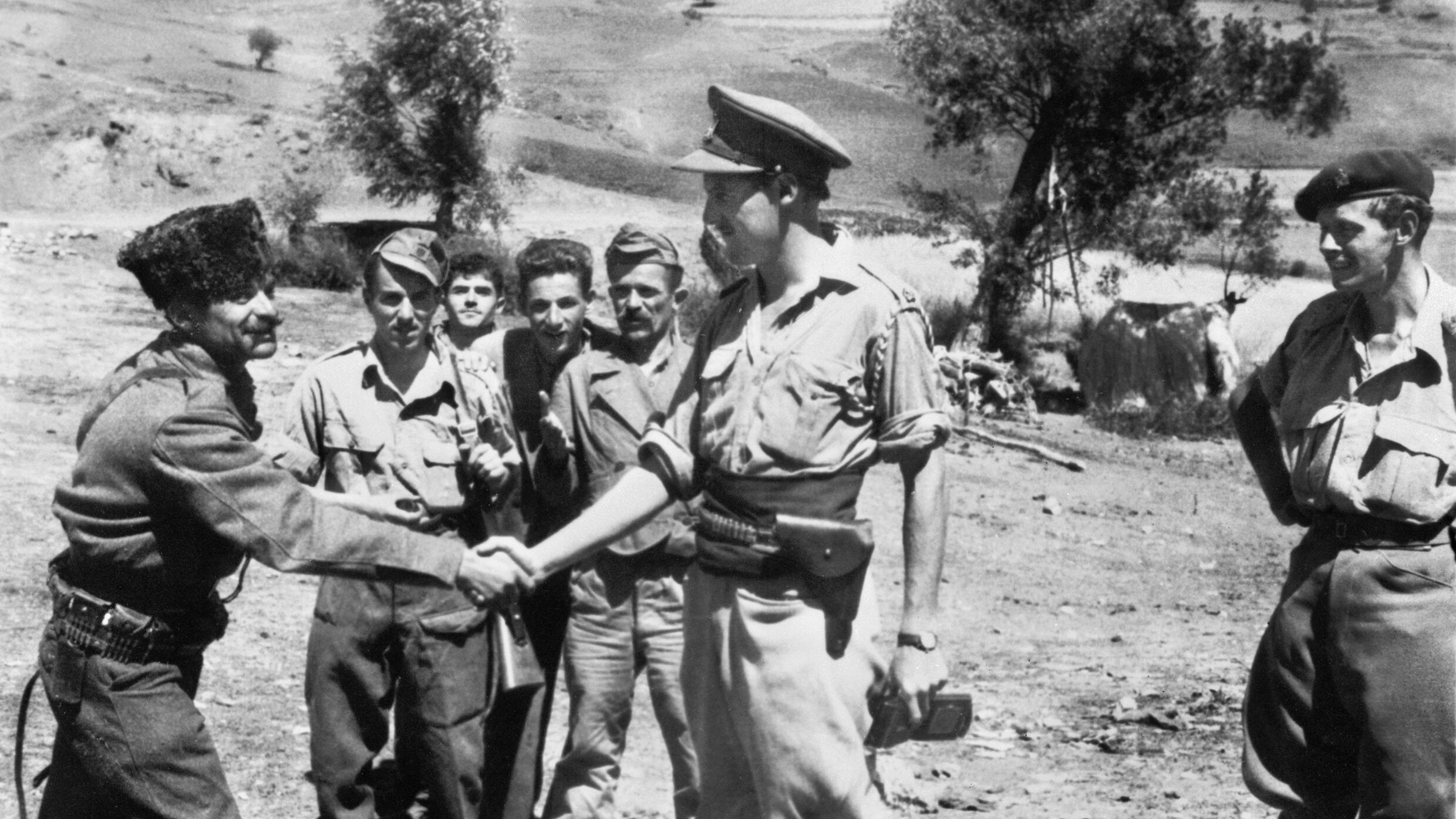
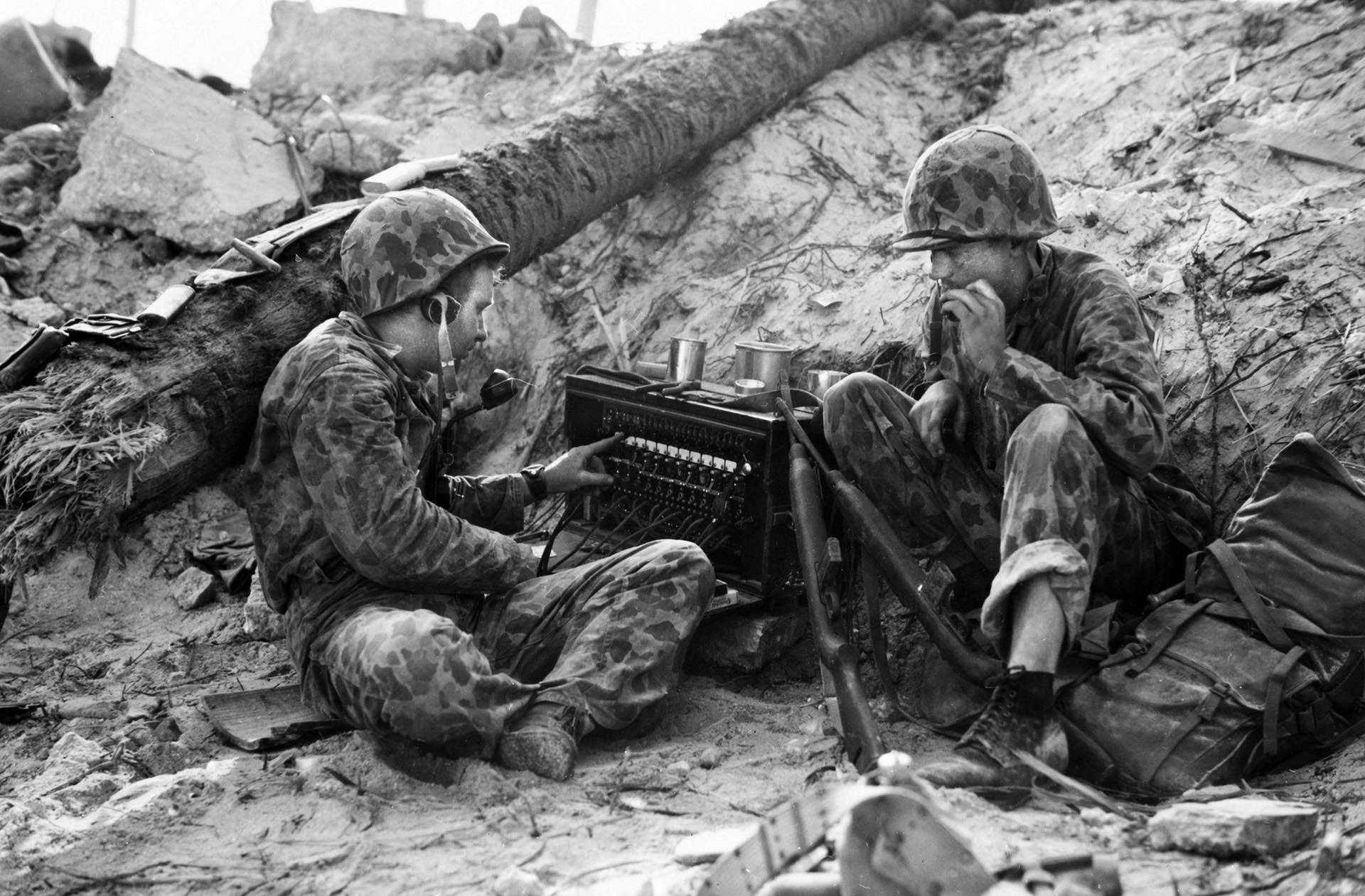
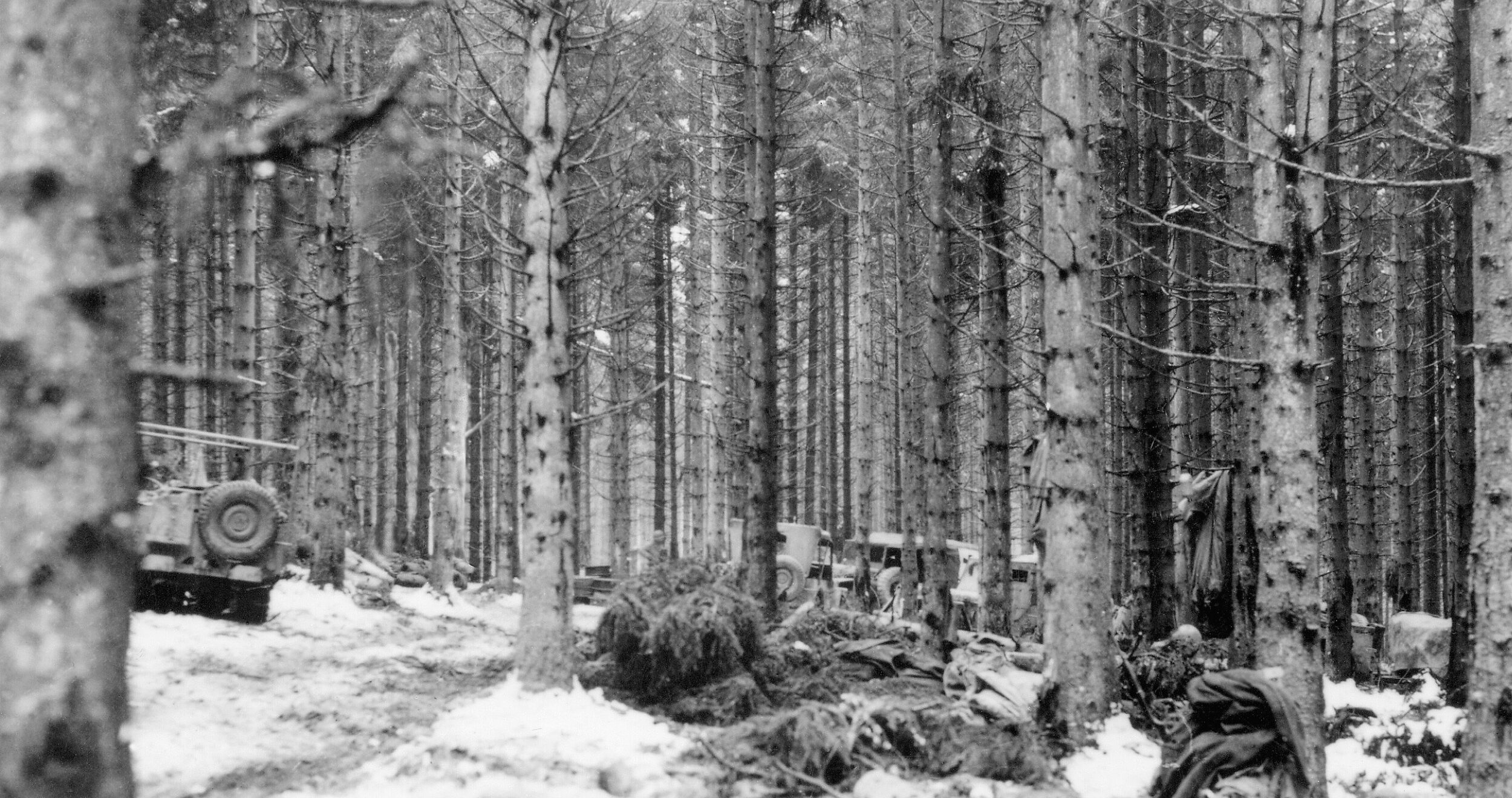
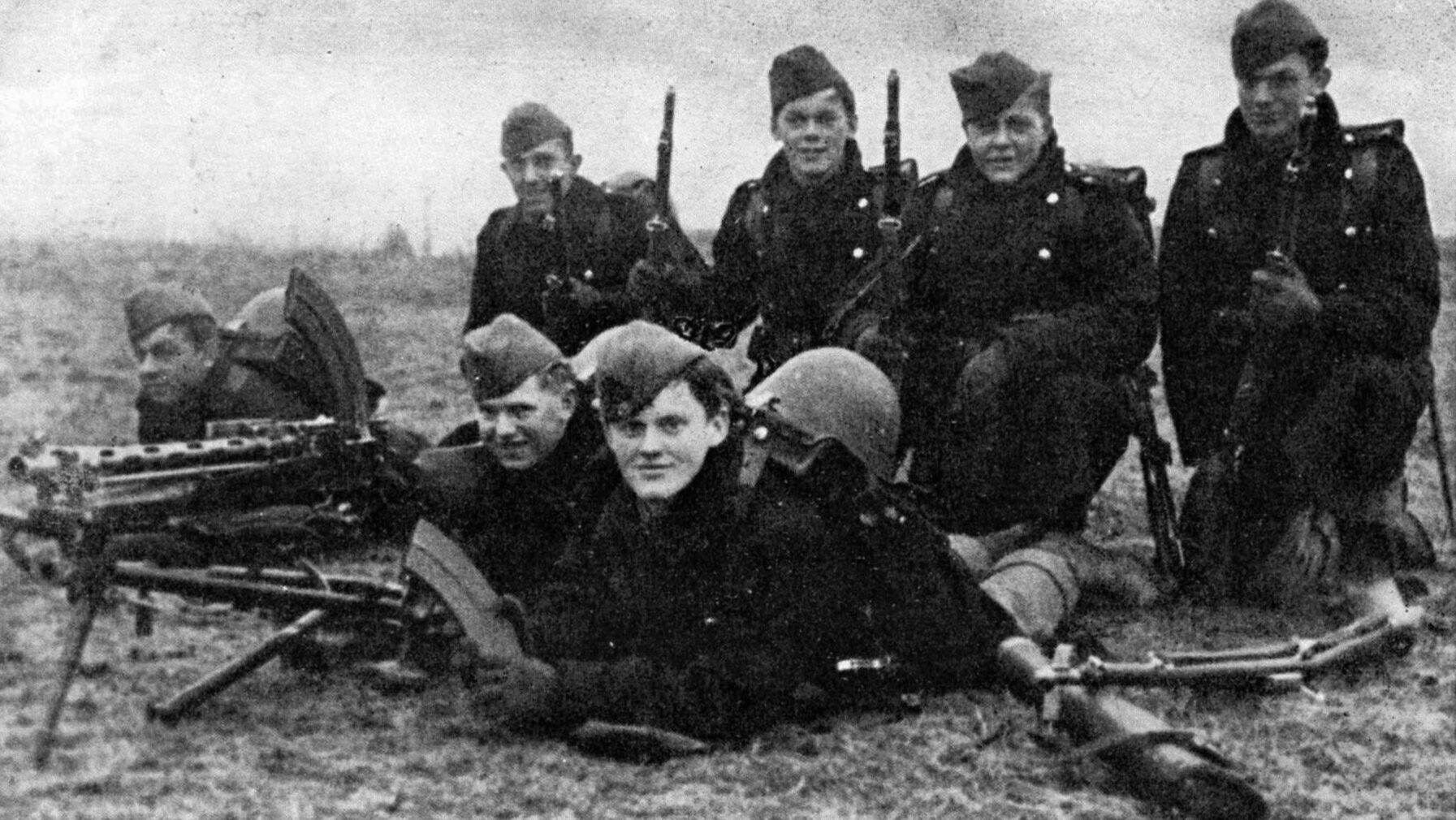
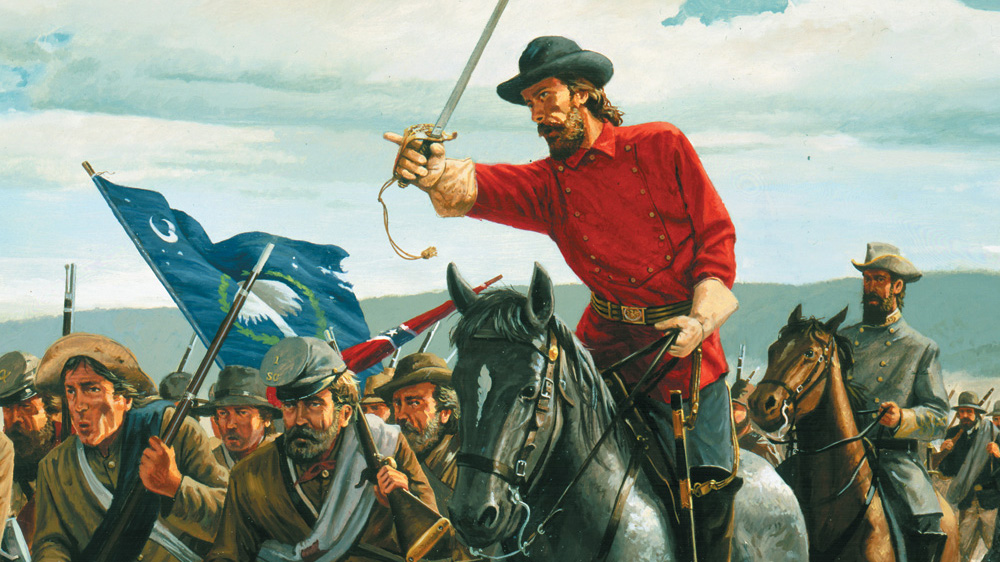
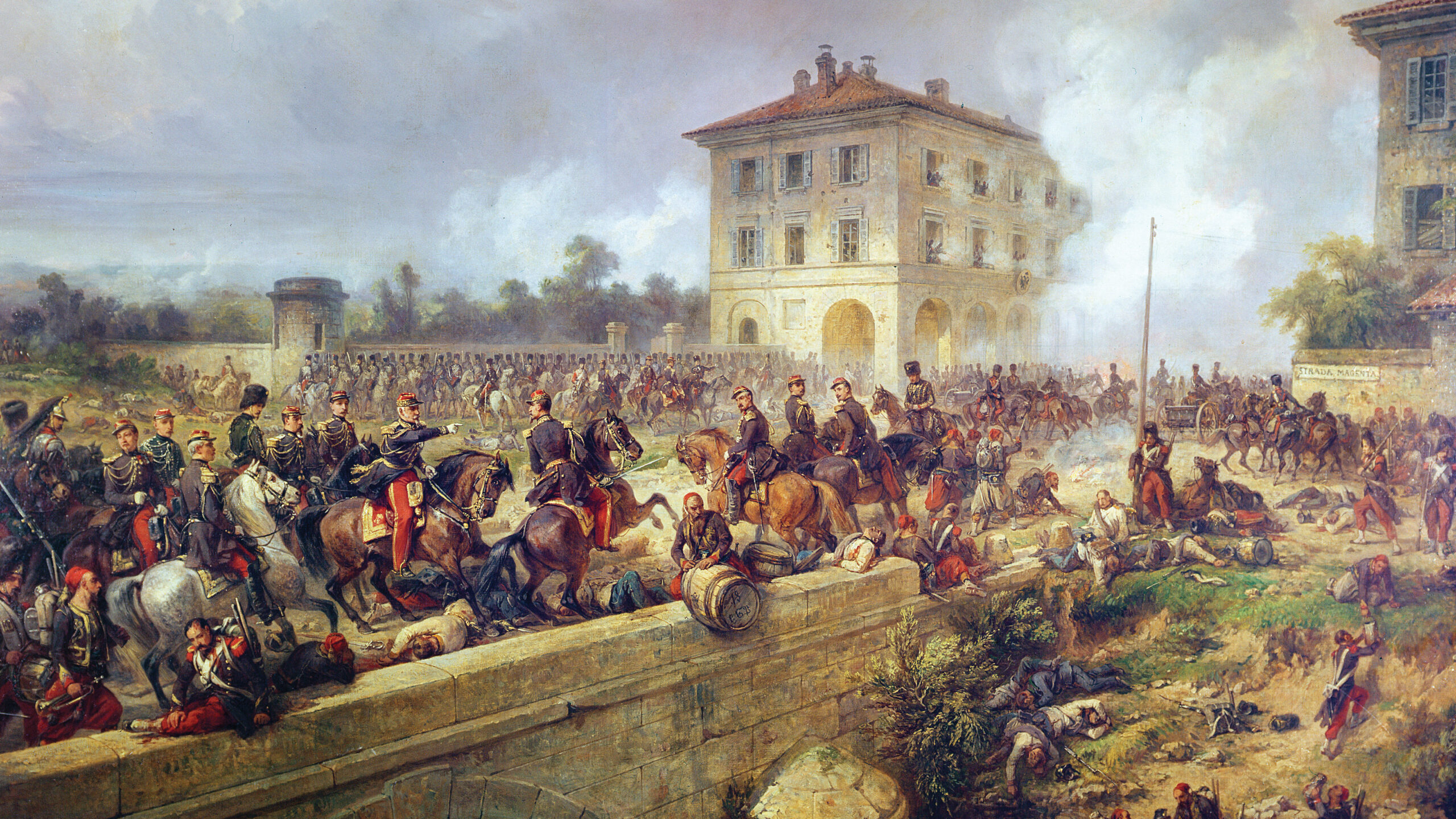
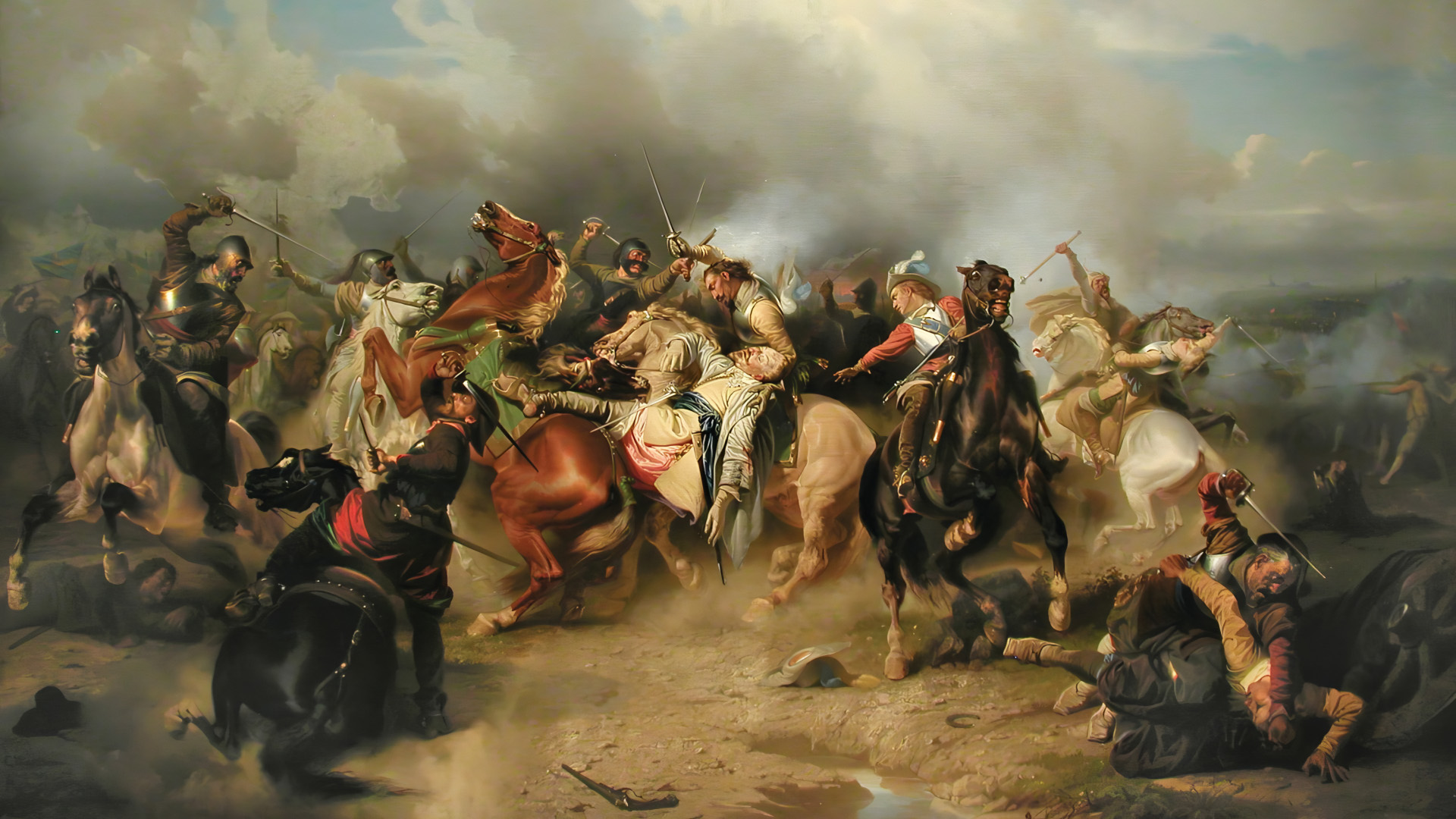
Join The Conversation
Comments
View All Comments